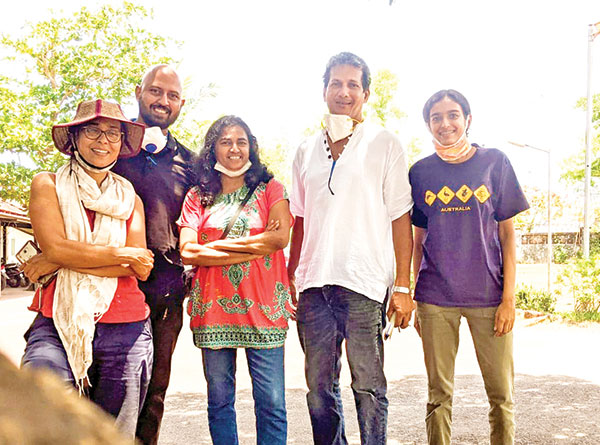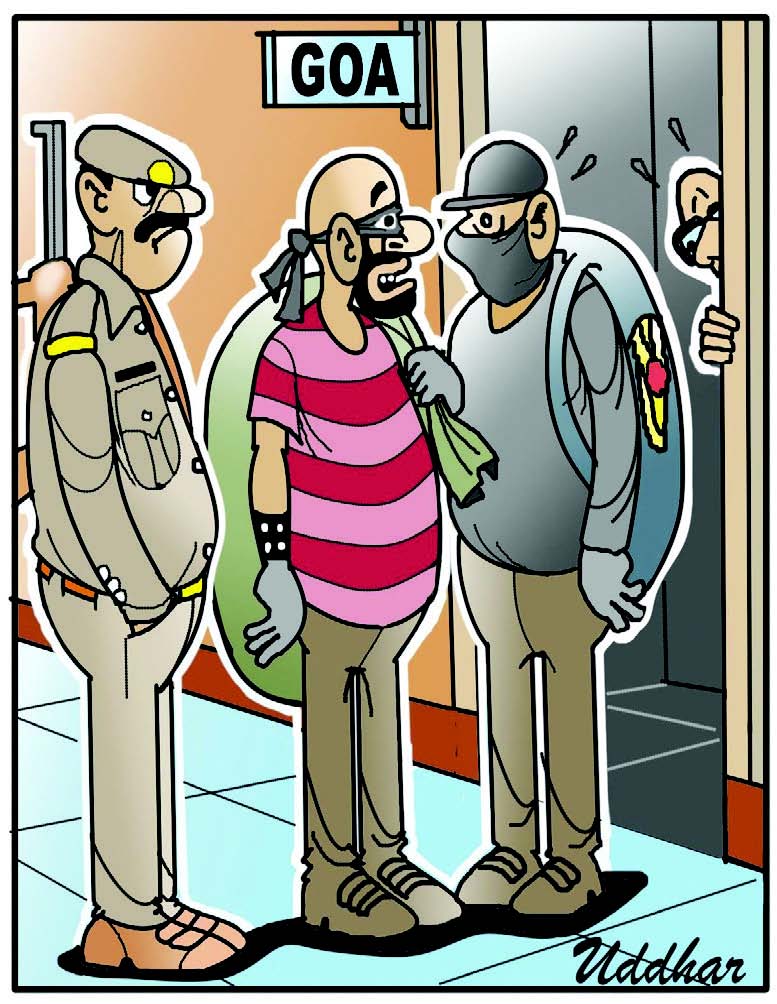
DEEPA GEORGE
At Grande Morod, I stand at the local pond that is witnessing much action with labourers, venturing deep to clean the visible muck - plastic wrappers, bottles and other sundry stuff is belched out, from years of accumulation. Despite the murky water and the high improbability, there is evidence of local thigur fish, thriving in this pond. Giving us an inkling of what the pond may have been like in the 80s, Belleza Pereira, a resident who has lived near the pond for over 40 years reminisces, “In earlier times, this water was used for irrigation. Even cattle would drink this water and locals would also regularly catch fish. It was so green and clean. In fact, the local residents themselves would maintain the pond, doing the ‘kameri’ work on their own.
She resignedly sighs, “These days, people are divorced from nature.” Belleza has also been renting her outhouse tenements to a few migrant workers and knowing that this idle time was only getting them more anxious, she roped these workers to the project. As the resident supervisor to the project, the 65-year-old Belleza uses her practical, hands on experience and wisdom in ensuring the work is done well.
Sharada Kerkar, from the Museum of Goa (MOG) Foundation that also runs an art livelihood programme for migrants and one of the key members on this project explains, “Many of us from Saligao were part of the relief work for stranded migrants around our neighbourhood, ever since the lockdown was announced. My aunt, Harshada Kerkar initially brought the local pond in Saligao to my notice and we thought the time was right to initiate a clean-up of a pond in our vicinity and also gainfully employ migrant labourers.” She adds, “The support that Pradeep Sarmokadam from the Biodiversity department extended to us gave us the confidence to persevere.”
Roping in architect Hyacinth Pinto, who is known for her ecologically friendly and sustainable architectural design, the five member team that also includes Trevor Pinto and Anthony D’souza swung into action, aiming to get work done before the monsoons. “Our main aim is to start rain water harvesting. There is so much water that we receive in the monsoons that can be better managed so that we don’t have to face water shortages through the rest of the year. Revitalised ponds have a direct impact on the biodiversity of the area affecting life cycles of turtles, fish and other aquatic species,” Hyacinth reveals.
Clear about not using JCBs to dig the pond, given the myriad plant and fish species, the team was also clear about not waiting for funding but to get started as a community led and community owned initiative. Explaining the intent, Sharada says, “We got the local residents' support by explaining the concept to them and they readily contributed. The money raised is used to pay the labourers as part payment and part food rations and in getting the required equipment and gear.” She continues, “Moreover, they can see the changes unfold on a day to day basis.” From de-weeding to creating soak pits and checking septic tanks, community ownership of this project makes it sustainable in the long term.
Sharada, in her 20s has the infectious optimism of youth by her side. She wisely states, “There are several lakes, ponds and bandhs that have not been cleaned for years. These can be revived as biodiversity hotspots. Goa, as a state, must focus on environment, agriculture and sustainable tourism. Everything can’t be commercialised.” Drawing attention to sustainable tourism, she points out, “The benefits of what we do today will be visible in the coming years.”
Sharing her sentiment, Hyacinth adds, “We can’t go back to the same way of life in pre-COVID times. This pause should highlight the fact that we need new means of livelihood and need to seriously introspect on where we’ve failed. We should focus on hinterland tourism - our local heritage from architecture to local crops like cashews to local drinks like feni and urak to local farms. Let’s keep the focus on what makes Goa beautiful - its rich biodiversity.”
The team is confident that the results will speak for itself and that more support will be forthcoming and more such water bodies will be identified post this pilot project. “I’ve already got people from Benaulim contacting us to help with a water body there,” says Hyacinth and reiterates, “This is not a project with any commercial or political gain in mind. It is community owned and driven with no third party involved.”
At the site, Sharada shares plans to also plant some trees that will prevent soil erosion along the pond. Bringing in elements of her art background, she shares her plan to also conduct an art workshop with the participation of local children. “I’d like them to draw their dream pond,” she says poignantly and reminiscent of her childhood, adds, “It’s so important to grow up around plants and nature. Only then will you want to protect it.” With community participation, there is much hope in bringing back Goa’s lost glory. Perhaps, that could well be the chase worth pursuing post COVID-19
